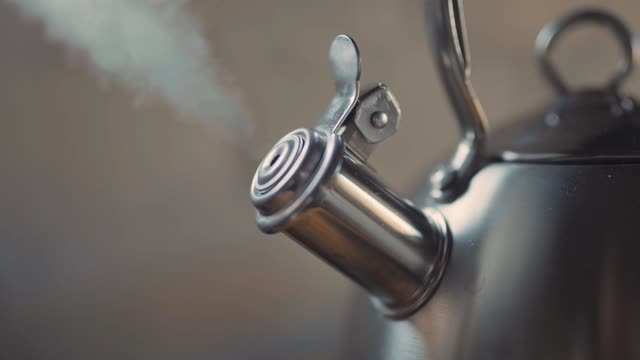Premium Only Content

Tea-kittle-whistle-sound
mechanism which gives you a tone when you blow over an empty bottle.”
When air is blown over the open neck of a bottle, the Helmholtz resonator mechanism causes sound to radiate from the neck. The air just inside the neck is bouncing up and down – the air in the main body of the bottle being compressed and released each time like a spring.
For the kettle, the spring is the air inside the whistle, while the air within the whistle opening reverberates like the air in the neck of a bottle. “In a kettle, of course, the air is blown through, rather than over, the neck – the effect is similar to whistling by mouth,” Henrywood added. “In some kettles, both these mechanisms are happening. Because our study enables us to assess the mechanisms in action, we can potentially make modifications to stop the noise – if we want to.”
Henrywood and Agarwal are now working on a project to make quieter high-speed hand-dryers, by looking at how the jet of air released by these devices creates noise. Their paper on kettles - The Aeroacoustics Of A Steam Kettle – can be found in the October issue of The Physics Of Fluids.
-
 1:02:49
1:02:49
The Tom Renz Show
11 hours agoThe Democrats LA Fires & COVID Grand Jury
684 -
 47:49
47:49
PMG
15 hours ago $0.02 earned"There Ain’t No Grace in It! What to do when you’re worn out!"
3551 -
 3:19:06
3:19:06
FreshandFit
6 hours agoAnnoying HOES Kicked Off After HEATED Debate On Rape Culture!
54.2K45 -
 57:00
57:00
PMG
15 hours ago $8.19 earned"Terror Attacks or False Flags? IT DOESN'T ADD UP!!!"
29.5K12 -
 1:14:42
1:14:42
Anthony Rogers
12 hours agoThoughts on the L.A. Fires
49.1K15 -
 2:37:32
2:37:32
Kim Iversen
11 hours agoTerrorism, Act of God or “Newscum” Incompetence: What REALLY Fueled The California Wildfires
69.3K216 -
 2:16:33
2:16:33
Tucker Carlson
9 hours agoTucker Carlson and Michael Shellenberger Break Down the California Fires
224K342 -
 58:50
58:50
Laura Loomer
7 hours agoThe Great Replacement (Full-Length Documentary)
42.2K31 -
 6:01:59
6:01:59
Razeo
8 hours agoEp 31: Finishing March Ridge & onto Muldraugh tonight
43.4K3 -
 1:00:37
1:00:37
Adam Does Movies
6 hours ago $6.44 earnedBatman II Update + Flash Director Fails + Movie Bombs! - LIVE!
56.1K5